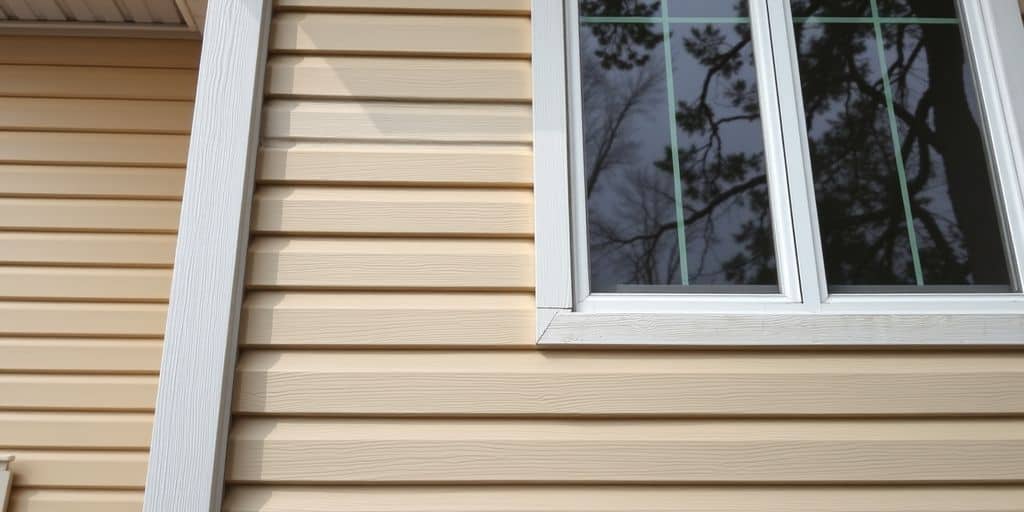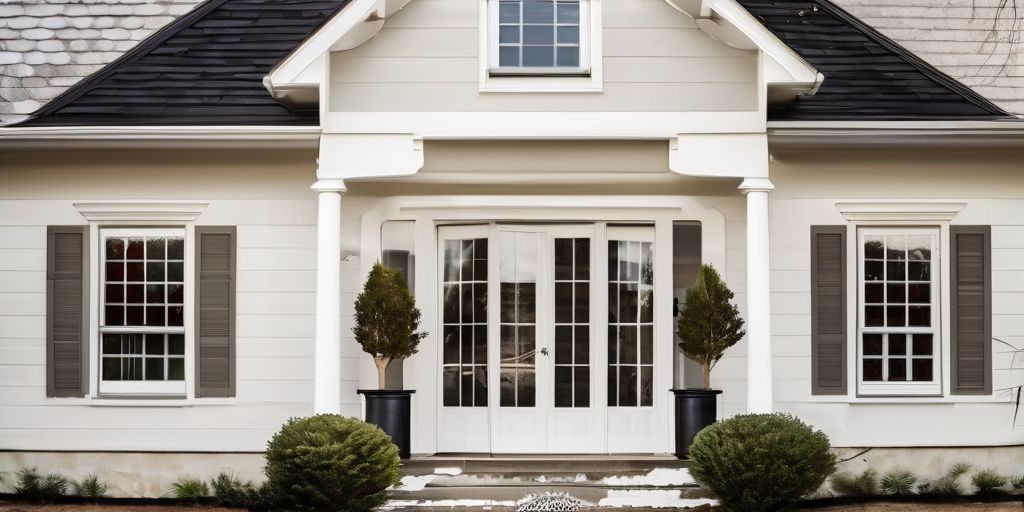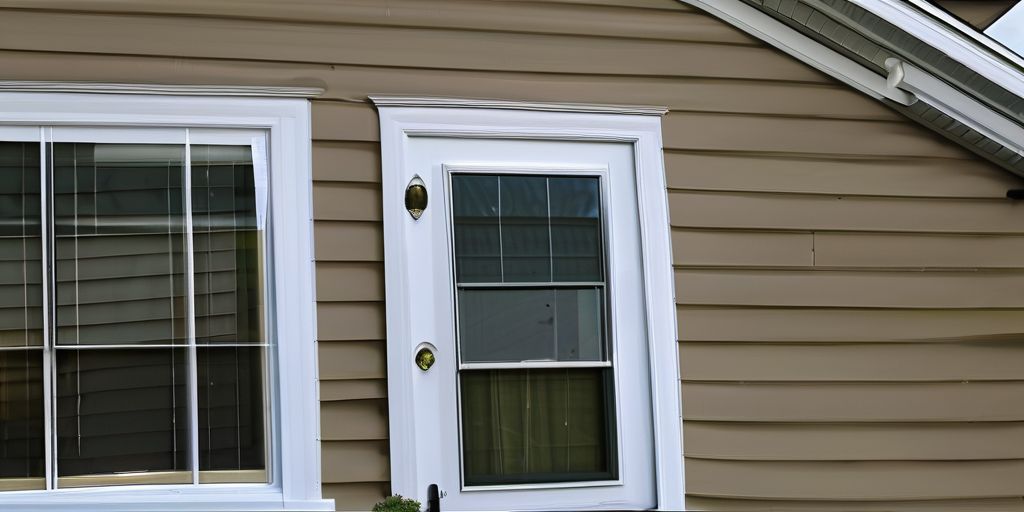Painting vinyl siding can give your home a fresh look and protect it from the elements. But in St. Catharines, humidity can make this task tricky. This guide will help you understand how humidity affects painting vinyl siding and offer tips for success.
Key Takeaways
- Humidity can make paint not stick well to vinyl siding.
- The best humidity level for painting is between 40% and 50%.
- Using acrylic paint can help your paint job last longer.
- Cleaning and fixing your siding before painting is very important.
- Think about the weather in St. Catharines before you start painting.
Understanding Humidity’s Role in Painting Vinyl Siding
How Humidity Affects Paint Adhesion
Humidity can greatly impact how well paint sticks to vinyl siding. When the air is too humid, the paint may not dry properly, leading to issues like bubbling and peeling. Proper preparation is essential to manage these effects. Make sure to clean and dry the siding thoroughly before painting.
Ideal Humidity Levels for Painting
For the best results, aim to paint when the humidity is between 40% and 50%. This range allows the paint to dry evenly and adhere well. Avoid painting on days when the humidity is very high or very low. Mild weather conditions are ideal for painting projects.
Common Mistakes to Avoid
- Painting in direct sunlight or when rain is expected.
- Not cleaning the siding properly before painting.
- Using low-quality paint that can’t withstand humid conditions.
- Ignoring weather forecasts and local climate factors.
Remember, the goal is not to rush the job but to ensure a durable and long-lasting finish. Proper preparation and timing are key to managing humidity effects on vinyl siding painting in St. Catharines.
Choosing the Right Paint for Humid Conditions
Benefits of Acrylic Paint
Acrylic paint is a fantastic choice for vinyl siding, especially in humid conditions. Here are some reasons why:
- Excellent adhesion: Acrylic paint sticks well to vinyl siding, even when the air is moist.
- Flexibility: It can expand and contract with temperature changes without cracking.
- Durability: High-quality acrylic paint resists fading, chalking, and peeling, keeping your siding looking fresh for years.
Color Selection Tips
Picking the right color for your vinyl siding can be fun but also tricky. Here are some tips to help you choose:
- Consider your home’s architectural style.
- Think about the surrounding landscape and neighborhood.
- Test a few samples in different lighting conditions.
Remember, lighter colors can make your home appear larger, while darker shades can add a touch of elegance.
Tools for a Smooth Application
Using the right tools can make a big difference in your painting project. Here are some must-haves:
- High-quality brushes and rollers: These ensure even application and reduce streaks.
- Paint sprayer: Ideal for large areas, providing a smooth and uniform finish.
- Painter’s tape: Helps create clean lines and protects areas you don’t want to paint.
For the best results, always use tools that are in good condition and appropriate for the type of paint you’re using.
By choosing the right paint and tools, you can ensure a beautiful and long-lasting finish for your vinyl siding, even in humid conditions.
Preparing Your Vinyl Siding for Painting
Steps for Cleaning and Repairing
Before you start painting, it’s crucial to clean your vinyl siding thoroughly. This helps remove dirt, grime, and mildew that can affect paint adhesion. Follow these steps:
- Mix water with a gentle cleaning solution.
- Use a soft brush or cloth to scrub the siding.
- Rinse with clean water and let it dry completely.
If you find any damaged areas, repair them before painting. Sand and paint the siding to ensure a smooth surface.
Remember, the goal is not to cover the siding in the least amount of time but to build up a protective coating that enhances the siding’s longevity and aesthetic appeal.
The Importance of Priming
Applying a primer is essential for a lasting paint job. Vinyl siding is non-porous, so a primer helps the paint stick better. Here’s how to do it:
- Choose a high-quality primer designed for vinyl.
- Pour primer into a paint tray.
- Use a roller to apply primer evenly, avoiding heavy coats that can cause drips.
Timing Your Painting Project
Timing is everything when it comes to painting vinyl siding. Consider weather conditions to ensure the best results. Here are some tips:
- Paint during mild weather conditions to avoid extreme temperatures.
- Early morning or late afternoon are usually the best times to paint.
- Avoid painting when rain is expected or during high humidity.
Proper preparation is key to a durable paint job. Taking the time to repair any imperfections can significantly extend the life of your paintwork.
Managing Humidity During the Painting Process
Tips for Painting on Humid Days
Painting on humid days can be tricky, but with the right approach, you can still achieve great results. Here are some tips:
- Paint during early morning or late afternoon when humidity levels are lower.
- Avoid painting in direct sunlight as it can cause the paint to dry too quickly.
- Use fans to increase air circulation and help the paint dry faster.
- Allow extra drying time between coats to ensure proper adhesion.
Using Dehumidifiers and Other Tools
Dehumidifiers can be a lifesaver when painting in humid conditions. They help reduce moisture in the air, making it easier for the paint to dry. Here are some tools you might find useful:
- Dehumidifiers: Place them in the area where you’re painting to lower humidity levels.
- Fans: Use them to improve air circulation and speed up drying times.
- Hygrometers: These devices measure humidity levels, helping you decide the best time to paint.
Ensuring Proper Adhesion
Proper adhesion is crucial for a long-lasting paint job. Here are some steps to ensure your paint sticks well:
- Use paints specifically designed for high humidity conditions.
- Apply a primer designed for vinyl siding to help with paint adhesion.
- Test the paint on a small area first to see how it reacts to the humidity.
Remember, managing humidity is key to a successful painting project. Take your time and use the right tools to ensure a beautiful, long-lasting finish.
If you’re in St. Catharines, consider visiting the Welland Canals Center to take a break and get inspired by the beautiful surroundings.
Maintaining Your Painted Vinyl Siding
Routine Checks and Maintenance
To keep your painted vinyl siding looking its best, regular maintenance is key. Here are some tips:
- Conduct regular inspections to spot any potential issues early.
- Clean the siding gently with a solution of water and mild soap to prevent buildup of dirt and grime.
- Repair any damages promptly to prevent further deterioration.
Addressing Climate-Induced Damage
Weather can take a toll on your siding. Be proactive with these steps:
- Be vigilant about changes in the weather that may affect the siding.
- Adjust your maintenance schedule based on seasonal weather conditions to protect against climate-induced damage.
- Ensure that all caulking and seals are intact to prevent moisture intrusion.
Long-Term Care Strategies
For long-lasting results, consider these strategies:
- Reapply a coat of paint every 5 years to maintain its freshness and protective qualities.
- Use high-quality paint that can withstand various weather conditions.
- Implement protective measures such as proper landscaping to shield the siding from environmental factors.
By adhering to these maintenance tips, you can ensure that your painted vinyl siding remains vibrant and durable for many years to come.
Weather Considerations for Painting in St. Catharines
Best Times of Year to Paint
Painting your vinyl siding in St. Catharines requires careful timing. The best months are usually late spring and early fall. During these periods, temperatures are mild, and humidity levels are more stable. Avoid painting during the peak of summer or the dead of winter to ensure the paint adheres properly and dries evenly.
Monitoring Weather Forecasts
Always keep an eye on the weather forecast before starting your painting project. Look for a stretch of dry days with moderate temperatures. Rain or extreme heat can ruin your paint job. Use weather apps or local news channels to stay updated.
Adapting to Sudden Weather Changes
Weather in St. Catharines can be unpredictable. Be prepared to adapt if sudden changes occur. Have tarps and covers ready to protect your work if it starts to rain. If the temperature drops unexpectedly, pause your project until conditions improve.
Pro Tip: Painting near landmarks like the Welland Canal can be tricky due to the area’s unique microclimate. Always double-check local conditions before you start.
By considering these weather factors, you can achieve a long-lasting and beautiful paint job on your vinyl siding.
Preventing Common Issues with Painted Vinyl Siding
Painting vinyl siding can be a rewarding project, but it comes with its own set of challenges. Here are some tips to help you avoid common issues and keep your siding looking great for years to come.
Avoiding Bubbling and Peeling
Paint bubbling and peeling are common problems that can ruin the look of your vinyl siding. To prevent these issues:
- Ensure the siding is completely dry before painting.
- Clean the surface thoroughly to remove dirt and mildew.
- Apply a high-quality primer before painting.
- Use thin, even coats of paint.
Preventing Warping and Cracking
Warping and cracking can occur due to temperature changes and improper paint application. Follow these steps to minimize these issues:
- Choose the right type of paint for vinyl siding.
- Avoid painting in extreme temperatures.
- Apply paint during stable weather conditions.
- Regularly inspect your siding for any signs of damage.
Using UV-Resistant Paint
UV-resistant paint is essential for protecting your vinyl siding from the sun’s harmful rays. Benefits of using UV-resistant paint include:
- Preventing fading and discoloration.
- Maintaining the vibrancy and gloss of the paint over time.
- Protecting the siding from weather-related damages.
Remember, proper preparation and using the right materials can significantly extend the life of your painted vinyl siding.
By following these tips, you can achieve a beautiful and long-lasting finish on your vinyl siding, even in St. Catharines’ challenging climate.
Keeping your vinyl siding looking fresh can be tricky, but it doesn’t have to be. Visit our website to discover easy tips and expert advice on maintaining your home’s exterior. Don’t let common issues ruin your curb appeal—learn how to prevent them today!
Conclusion
In the end, painting vinyl siding in St. Catharines requires careful planning, especially when it comes to humidity. By picking the right time and using the right materials, you can make sure your paint job looks great and lasts a long time. Remember to clean and fix your siding before you start, and try to paint when the humidity is between 40% and 50%. With these tips, you’ll be well on your way to a beautiful and durable finish for your home.
Frequently Asked Questions
How does humidity affect painting vinyl siding?
Humidity can make it hard for paint to stick to vinyl siding. Too much moisture in the air can cause the paint to dry slowly, leading to problems like bubbling and peeling.
What is the best humidity level for painting vinyl siding?
The best humidity level for painting vinyl siding is between 40% and 50%. This range helps the paint dry evenly and stick well.
Why is acrylic paint recommended for humid conditions?
Acrylic paint is recommended because it sticks well and can handle changes in temperature without cracking. It’s also good at resisting fading and peeling.
What steps should I take to prepare vinyl siding for painting?
First, clean the siding to remove dirt and grime. Next, repair any cracks or damage. Finally, sand any glossy spots and apply a primer to help the paint stick better.
How can I manage humidity when painting vinyl siding?
Try to paint on days when the humidity is lower. You can also use dehumidifiers if you’re painting indoors. Make sure to allow extra drying time on humid days.
What are some common mistakes to avoid when painting vinyl siding?
Avoid painting in direct sunlight or when rain is expected. Make sure to clean the siding properly and use high-quality paint. Always check the weather forecast before starting your project.





